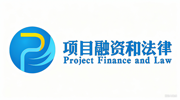China, South Africa banks seal first yuan loan deal to boost African development

A large batch of goods, including dump trucks, is assembled at the Yantai Port in East China’s Shandong Province for export to Africa on July 7, 2025. In the first half of 2025, the port’s China-Africa liner service transported 2.858 million tons of equipment and materials to over 20 African countries and regions, up 80.7 percent year-on-year, marking a record high and strengthening China-Africa economic and trade ties. Photo: VCG
China Development Bank (CDB) and the Development Bank of Southern Africa (DBSA) signed a loan agreement worth 2.1 billion yuan ($290 million), marking the first yuan-denominated financing cooperation between the two institutions, according to the CDB on Wednesday, the Xinhua News Agency reported.
This agreement was signed on Tuesday during the 2025 BRICS Interbank Cooperation Mechanism Annual Meeting, which took place as part of the broader 17th BRICS Summit, held in Rio de Janeiro, Brazil.
The funds will be used to support projects in Africa across sectors such as infrastructure, energy, information and communications, water conservancy and sanitation, and manufacturing, according to the CDB.
As members of the BRICS Interbank Cooperation Mechanism, the agreement reflects the two banks’ joint efforts to enhance the quality of BRICS cooperation and contribute to the China-Africa 10 partnership action plans, said the CDB.
The CDB said that it has long placed great importance on cooperation with South Africa. Under the BRICS Interbank framework, the CDB has actively supported collaboration in areas such as infrastructure, energy and power, and small and medium-sized enterprise development.
The launch of the first yuan-denominated financing project between the CDB and the DBSA carries major strategic value economically, financially, and geopolitically, Song Wei, a professor at the School of International Relations and Diplomacy at Beijing Foreign Studies University, told the Global Times on Wednesday, noting that it helps upgrade South Africa’s aging infrastructure, supports economic growth, and fills critical funding gaps.
With limited domestic funds for key sectors like electricity, transport, and communications, yuan financing offers a new channel to modernize essential projects and improve the business environment, boosting industrial development, the Chinese expert said. She added that the project also enhances public wellbeing, with funds directed to water, healthcare, and education—benefiting ordinary citizens and helping address unemployment, especially through education-related cooperation.
Moreover, the cooperation also helps to advance yuan internationalization and helps the country reduce reliance on the US dollar. “For African nations burdened by dollar-denominated debt, yuan financing provides a more stable alternative and supports the development of offshore yuan hubs in Africa,” Song said.
The initiative also deepens China-Africa cooperation, especially under the Belt and Road Initiative, she said, adding that as a key BRICS member, South Africa’s involvement can influence broader Southern Africa and offer an alternative to Western-led financing models.
As of the end of June 2024, the CDB had established partnerships with more than 40 African countries, providing more than $65 billion in cumulative financing to Africa. The funds primarily supported development in areas such as infrastructure, energy and resources, trade and industrial parks, agriculture, and telecommunications, according to the bank’s official website.
Global Times






